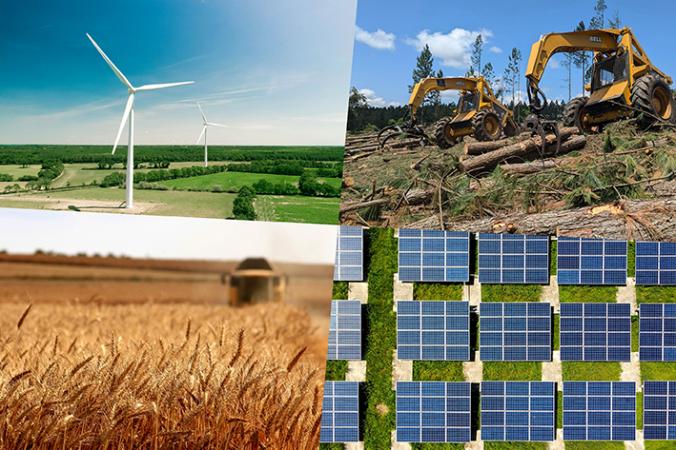When Should You Send Maintenance Workers For Additional Training
The upskilling of maintenance workers should be one of the most important and ongoing functions of any facilities management.
Additional training for maintenance workers may be required for either general, safety-related issues - such as revised fire or emergency response training - or for specialized equipment - such as the maintenance of new HVAC equipment and systems. Furthermore, up-skilling may be in the form of on-the-job (OJT) training undertaken by supervisors or may require training by external experts or at workshops, schools, or colleges. Online-based e-learning is another means by which additional learning can occur.
Below are some of the key moments when you should consider sending your maintenance workers for additional training:
1. In the event of an incident
An incident should be an instantaneous red flag in your maintenance management system. That is because an incident is a de facto system non-conformance and reflects possible gaps in worker knowledge or aptitude. Furthermore, even near misses that may have had serious consequences for employee health and safety or for physical assets should be classified as incidents-in-waiting.
Any significant incident or even near-miss might warrant additional training. In terms of learning, the incident itself can be integral to the learning process needed. For example, the near-electrocution of a maintenance worker doing repairs to a malfunctioning machine may be indicative of poor adherence to lock-out/tagout (LOTO) procedures. This serious near-miss could form the basis of re-educating workers regarding the critical importance of these safety procedures.
2. When there is a change in maintenance scope
There are many different reasons why there may be changes in the scope of maintenance work needed. These can include new tasks being required of maintenance workers due to new or upgraded equipment or changed work processes. There may also be heightened risks due to possible exposure to new chemicals or electrical machinery, and so forth.
As a result, workers may need to be up-skilled as a result of a changed scope of work. This training will have two direct benefits: firstly, workers will learn how to work safely due to the changed scope, whatever it might be. Secondly, the risk probability of the given risk will be mitigated due to having trained workers.
3. When the law requires it
Maintenance is particularly affected by legal requirements and changes thereto, and additional training may be required to ensure compliance. Training is often mandated by law, particularly relating to occupational health and safety. Therefore, additional training needs to be flagged when new legislation is introduced or existing legislation amended.
Facilities managers need to be highly attentive to changes in legal requirements in their jurisdictions, which may impact maintenance functions. These may include laws relating to fall protection for workers doing maintenance at heights, which is probably the most hazardous type of maintenance work. Training regarding fire detection systems is also a key enforcement focus area for most agencies, as well as training for work in confined or hazardous locations.
4. With the advent of new technology
Compared to just a generation ago, technology has become far more entrenched and synonymous with the maintenance function in many workplaces. This technology may include computerized maintenance management system (CMMS) software, in which the valid inputs of maintenance workers are often crucial to its successful use. There may also be sensors based on artificial intelligence (AI) and other smart devices in the fast-growing Internet of Things (IoT) that may require workers to be trained for using them.
The bottom line is that many maintenance workers are fundamentally practical, ‘hands-on’ people and they may struggle with new technologies in their work. That reality, and those gaps, need to be addressed with additional training where needed.
5. When upskilling is required
In general, maintenance workers need to have acquired training in a diverse set of skills. However, existing skillsets may not be sufficient, so additional skills learning may be needed. This may be the case with maintenance workers who have changed the industry. For example, the maintenance worker who honed their skills in the property management industry may need to be up-skilled when they are hired to work in a food production plant.
Up-skilling may also be beneficial to older or more experienced workers, who may need to ‘step up their game’ with new skills. ‘Cutting corners’ and becoming lax in their adherence to work procedures can occur with more seasoned employees, and up-skilling can be a deft way of changing work habits or even improving morale due to a boring, all-too-familiar work routine.
6. As part of a continuous improvement program
A maintenance system is never static, and learning on the job should never be static as well. Additional learning should never be viewed as a ‘bonus’ when budgets and productivity needs allow for it, but as a firmly-entrenched must-have within the maintenance department.
A continuous improvement culture within maintenance is an excellent means of ensuring a commitment to additional, ongoing training. In fact, the logical assumption is that constant up-skilling of workers is an inevitable means of attaining continuous improvement. That culture needs to be driven by management at every level of an organization, in which management leads by example.
Today, maintenance workers need additional training more than ever. This is due to the increased complexity of maintenance work, both technological and logistical, as well as the fact that there is already a significant skills gap in the global maintenance field. Your skilled maintenance workers should be your most prized assets, and their ongoing up-skilling should be a given.
Author: Bryan Christiansen, founder and CEO of Limble CMMS.





![EMR_AMS-Asset-Monitor-banner_300x600_MW[62]OCT EMR_AMS-Asset-Monitor-banner_300x600_MW[62]OCT](/var/ezwebin_site/storage/images/media/images/emr_ams-asset-monitor-banner_300x600_mw-62-oct/79406-1-eng-GB/EMR_AMS-Asset-Monitor-banner_300x600_MW-62-OCT.png)



